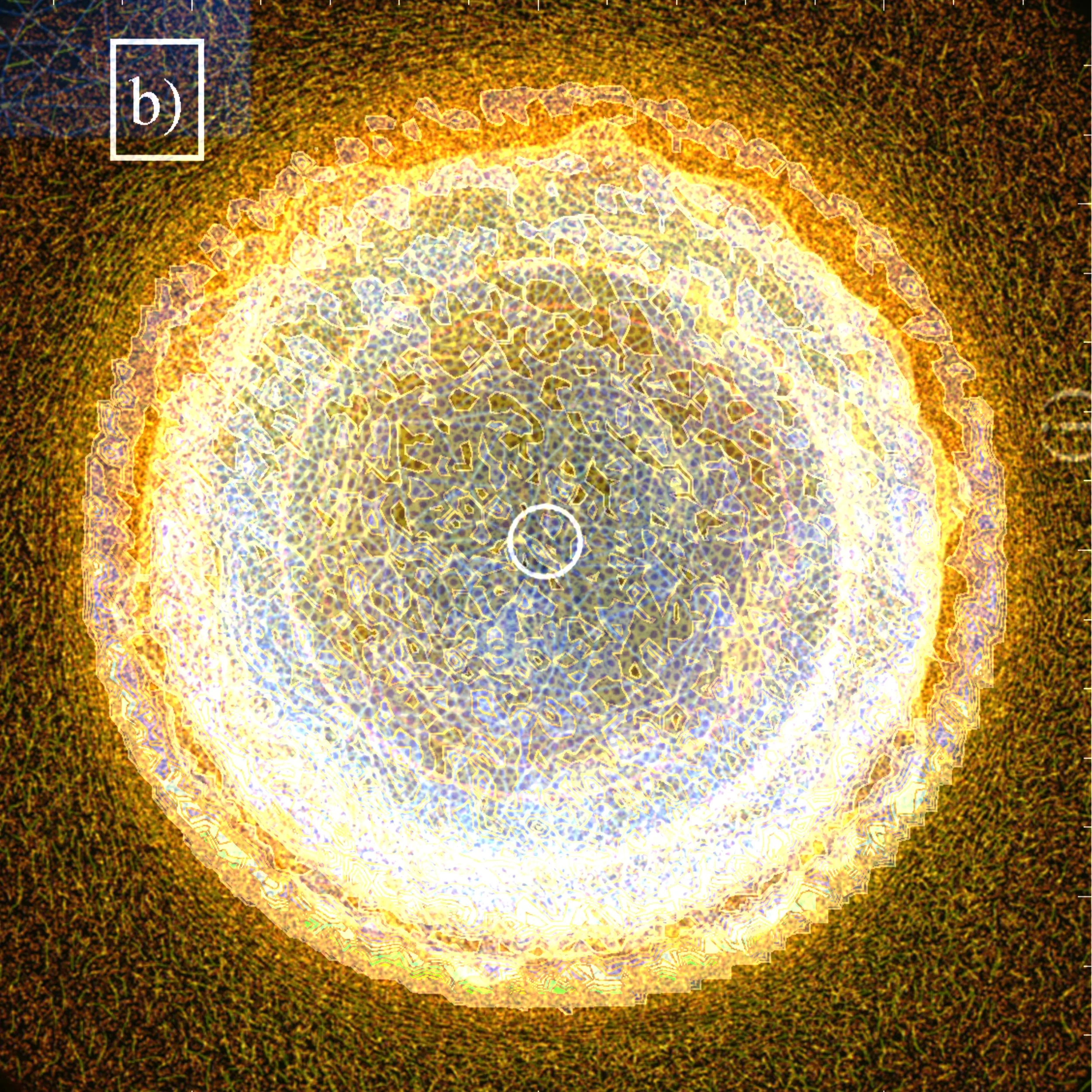Noösphere Series 2023
The Noösphere Series 2023, one hundred of which I am sharing below, evolved out of an ongoing interest in combinatorial mathematics and a morbid fascination with the image-exploding, meaning-destroying nature of NFTs and Generative AI.
A Reflection…
These images were not produced by Generative AI, but with an automated, combinatorial process of digital collage using Photoshop scripts.
Mining my extensive Noösphere archive of images appropriated from the sciences, I assembled a master Photoshop file with 395 image layers. I then hacked an NFT-generating javascript to create a program that randomly selected five layers, superimposed them, and saved a file. I kept this program running hot for many a night on a dedicated machine to produce tens of thousands of image files.
The number of unique, five-layer Noösphere images that can be created with this master file is 78,120,937,454. This can be calculated using the following formula, where C is the number of unique images, n is the number of layers in the master file, and r is the number of layers in each Noösphere (! denotes the factorial operation, which accounts for the combinatorial explosion):
C (n, r) = n! / (r!(n - r)!
C (395, 5) = 395! / 5!(395-5)!
C = 78,120,937,454
I’m pleased to report that I successfully peddled off all these NFTs at the bargain price of $1 each, but subsequently lost my billions in poorly advised tech acquisitions (but I did it to save Western Civilization) and, er… investments in NFTs (but! blockchain!). Oops. Well I sure have learned a thing or two.
Actually, I would estimate I’ve searched less than 0.000,001% of this possibility space, having spent many hours reviewing, evaluating, and sorting somewhat less than 100,000 images, 100 of which are above, selected according to some ineffable and constantly shifting personal aesthetic rubric.
Like any extractive process of searching for rare gems, this operation is mostly exhausting and, once in a blue moon, profoundly thrilling, like a gambler’s high. And because the images are all “appropriated” from the sciences (I’ve given all of the original creators a generous percentage… of zero dollars), it’s also got a bit of a kleptomaniac’s kick.
Sigh. I guess it’s only natural that I frame this series in a sardonic voice – I have, after all, spent more than a year dragging my eyes over tens of thousands of barely differentiable images (can I say it’s time-based work?). But I’ve also been working on this series for almost a decade, and I hope the images above convey something of what has motivated me to carry out this search – something about them being sciencey, but also, like, glowey?
I’ve been embedded in this process of weeding through a functionally infinite possibility space of images during a year where AI image generators have exploded in popularity, threatening the livelihood of artists, designers, and propagandists in a weirdly normalized kleptomaniacal paradigm shift that we haven’t had time to digest (and probably won’t, derp derp singularity…). But I’m more interested in what happens on the other end of the exchange that is art creation - viewing images, interpreting them, critical writing, the construction of new visual and material cultures that enable us to respond to our rapidly changing world.
The AI tech companies, while not rivaling the sophistication and commercial potential of my hacked-together Photoshop script, have created mechanical routines that are capable of generating hundreds of images, thousands of images, millions and billions and trillions of images. In this multiverse of exponential image inflation, where is the foundation of shared experience that makes cultural conversations possible? Are we ready for an atomized society where we, as viewers, are relegated to the role of a glazed eyeball, alone in a limitless phase space, searching a mostly meaningless universe for that one Goldilocks exoplanet on which to plant our pathetic flag? And what happens when we find this oh-so-rare magical orb? Whom will we share it with? Perhaps the infinite will reveal that limits and commonality are what makes things special.
Or maybe we’ll just be mesmerized by our glowey crystal baubles.



































































































